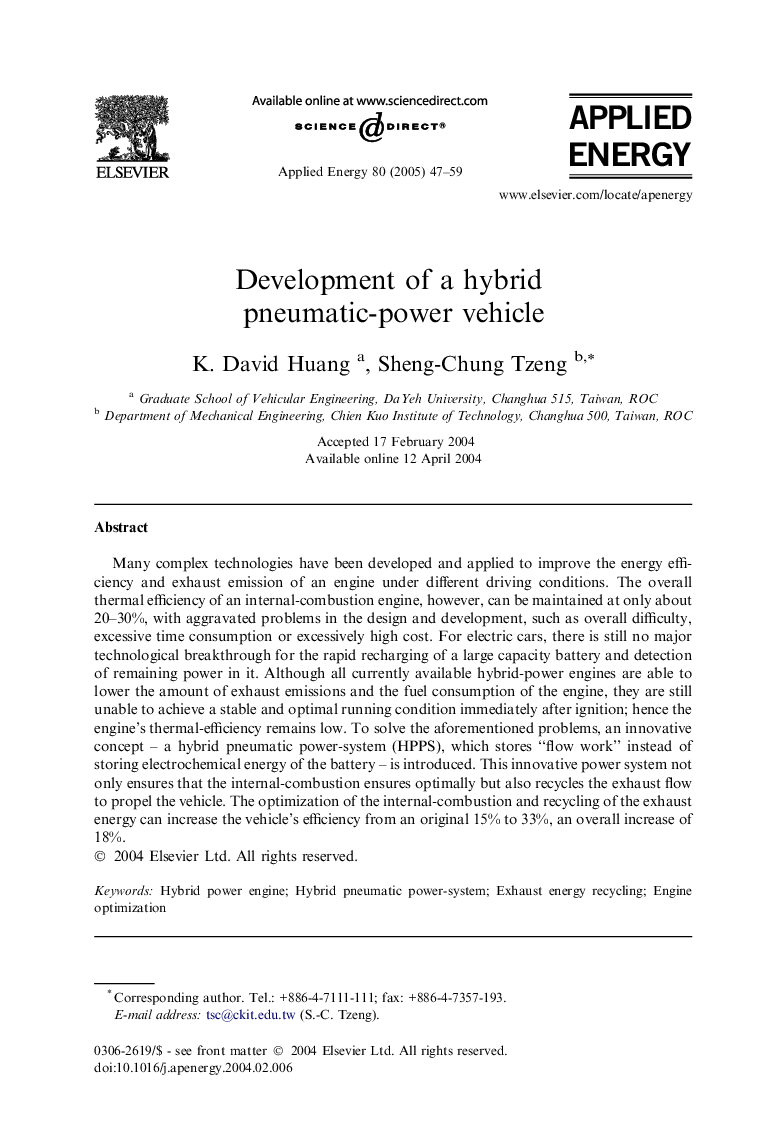| Article ID | Journal | Published Year | Pages | File Type |
|---|---|---|---|---|
| 10282138 | Applied Energy | 2005 | 13 Pages |
Abstract
Many complex technologies have been developed and applied to improve the energy efficiency and exhaust emission of an engine under different driving conditions. The overall thermal efficiency of an internal-combustion engine, however, can be maintained at only about 20-30%, with aggravated problems in the design and development, such as overall difficulty, excessive time consumption or excessively high cost. For electric cars, there is still no major technological breakthrough for the rapid recharging of a large capacity battery and detection of remaining power in it. Although all currently available hybrid-power engines are able to lower the amount of exhaust emissions and the fuel consumption of the engine, they are still unable to achieve a stable and optimal running condition immediately after ignition; hence the engine's thermal-efficiency remains low. To solve the aforementioned problems, an innovative concept - a hybrid pneumatic power-system (HPPS), which stores “flow work” instead of storing electrochemical energy of the battery - is introduced. This innovative power system not only ensures that the internal-combustion ensures optimally but also recycles the exhaust flow to propel the vehicle. The optimization of the internal-combustion and recycling of the exhaust energy can increase the vehicle's efficiency from an original 15% to 33%, an overall increase of 18%.
Keywords
Related Topics
Physical Sciences and Engineering
Energy
Energy Engineering and Power Technology
Authors
K.David Huang, Sheng-Chung Tzeng,
